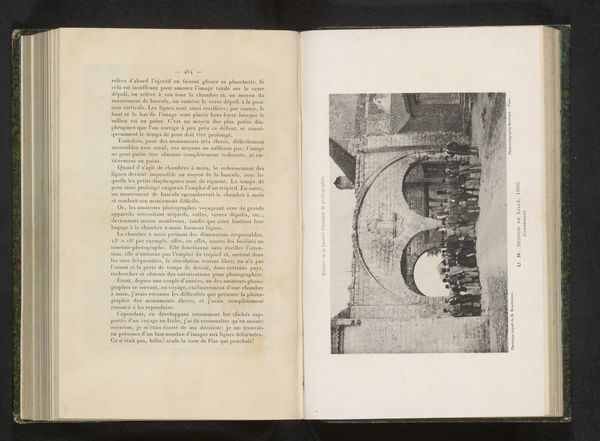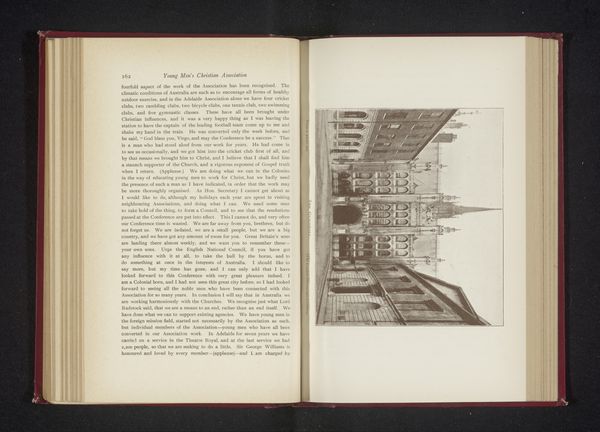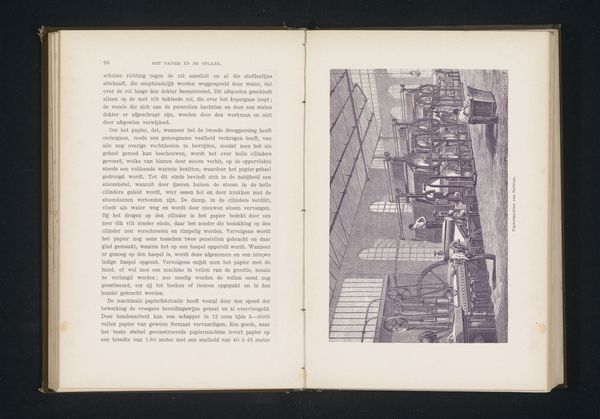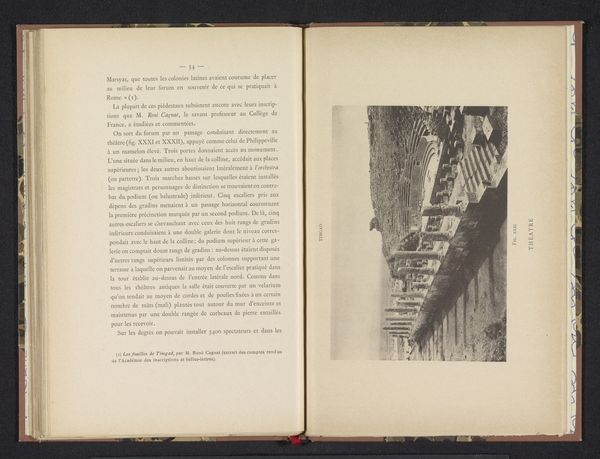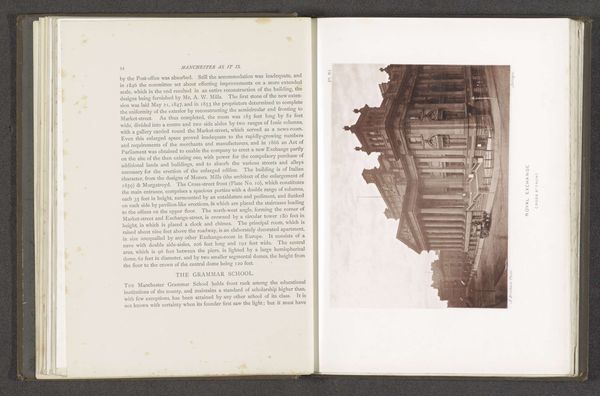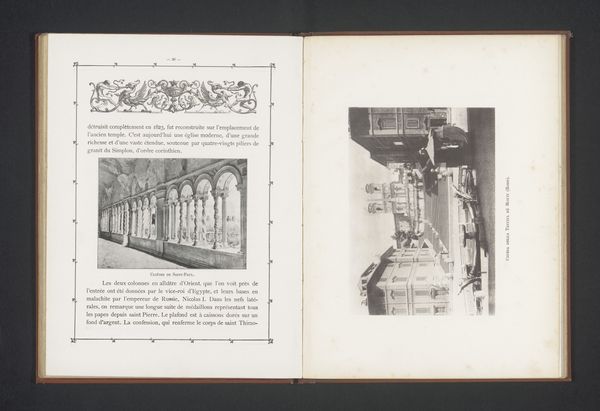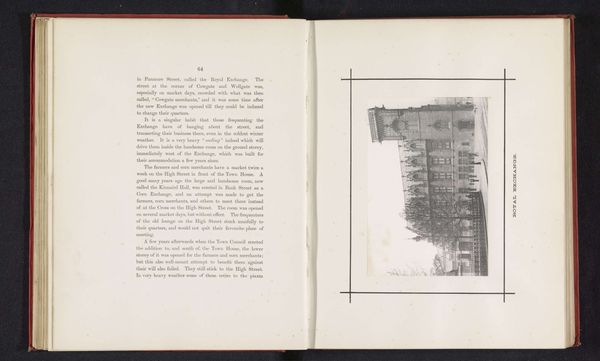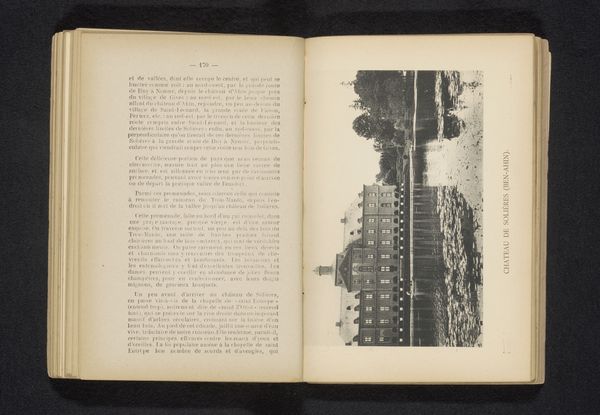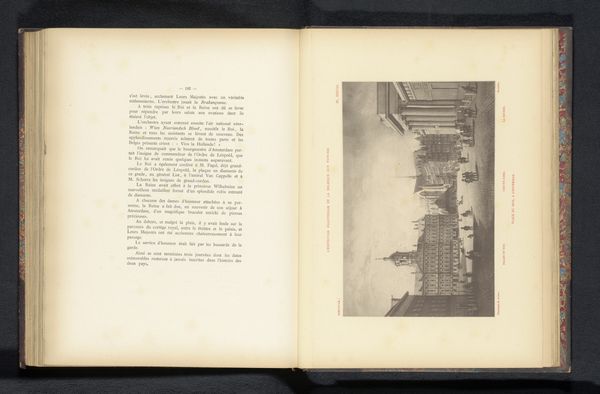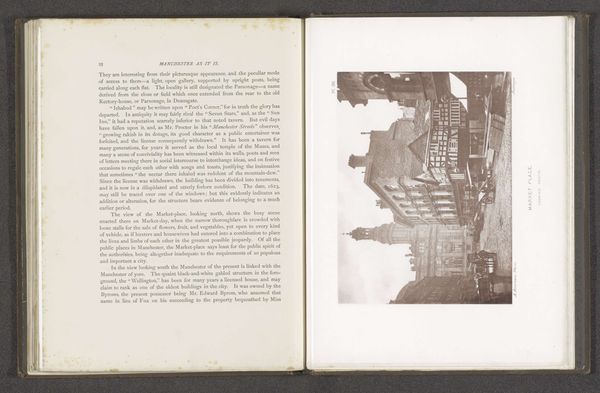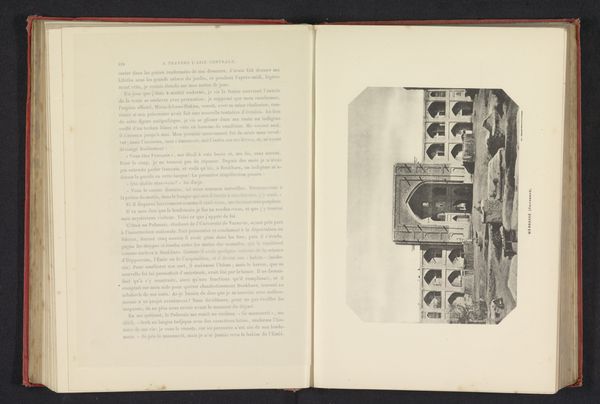
print, photography, site-specific, engraving
# print
#
photography
#
site-specific
#
engraving
#
building
Dimensions: height 98 mm, width 147 mm
Copyright: Rijks Museum: Open Domain
Curator: What an evocative image of the past. Here we have an early print of "Gezicht op de toegangspoort van het kasteel van Fontainebleau," that is "View of the entrance gate of the castle of Fontainebleau" dating from before 1869, origin currently unknown. Editor: It certainly evokes a sense of bygone grandeur. The light seems to accentuate the imposing architecture, creating a very textural feel for something essentially two-dimensional. Almost like seeing the monument emerging through time, but what materials did they use for that depth effect? Curator: Good eye! We know that both photography and engraving are mediums utilized in its production. Considering the era, it might involve a photogravure process, marrying the photographic image with the intaglio printing of engraving to give us those intricate lines. The act of combining mediums adds an interesting dimension. Editor: Indeed. And it’s not just the visual blend but also the labor itself—the physical act of engraving responding to the light-sensitized photographic plate. Someone has to cut these lines with skill—all that is materialized history and human craft combining within it. Think of the specific ink they might have used to ensure durability, and the high consumption demand for that effect. Curator: Yes, it shows both technical ingenuity and a yearning for capturing a symbol of power in its full monumental glory. This specific angle perhaps also aimed to convey ideas around both access and fortification? Or maybe they hoped to invoke cultural memory? Editor: I think the choice of print aligns with that. It allowed the image to circulate widely, entering homes as both decoration and artifact, reinforcing cultural norms tied with power beyond the walls of the castle. This isn’t a unique handmade item for an elite; its a repeatable object destined for mass consumption. Curator: The symbolism definitely operates on different layers here. The image speaks of cultural and temporal continuity that outlasts any one patron. Editor: Quite a material shift, though. That continuity comes with its own cultural cost for labor. Well, these material considerations makes one rethink this image in different contexts now, don’t they?
Comments
No comments
Be the first to comment and join the conversation on the ultimate creative platform.
